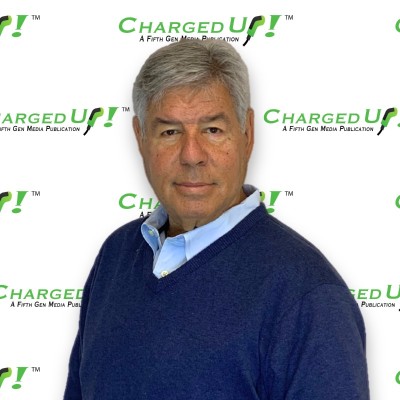Is Charging EVs Cheaper Than Gas? It Depends — Here's How to Read Your Local Market’s Energy Math
- Rich Berliner

- Oct 28
- 4 min read
Ask ten EV owners whether EVs are cheaper to “fuel up” than internal combustion engine cars using gas and you’ll get eleven answers. The truth is variable and can be useful for property owners and CPOs: charging product and pricing depends on where you source your energy. Home electricity rates, local pump prices, and the unique cost stack of public DC fast charging (DCFC), including incentives, don’t move together. That’s why a charging hub can feel like a bargain in Portland and “just okay” in Phoenix—even with the same hardware.
Factors Actually Driving the Gap
Home power sets the floor. Residential electricity varies sharply by state, and that alone explains why everyday EV miles feel “cheap” in some regions and merely “competitive” in others. Use your local EIA residential cents per kWh pricing as the anchor—because that’s what most EV miles are built on.
Gasoline lives on a different map. AAA’s gas price state averages bounce around for reasons that have nothing to do with your utility tariff. When gas is high (coasts), the EV story looks stronger; when gas is low (interior states), the gap narrows—before public charging even enters the picture.
DCFC is its own cost stack. Fast charging adds commercial tariffs, incentives, rent, field service, networking—and, critically, demand charges tied to peak power. NREL’s analysis is blunt: demand charges and retail electricity prices are the biggest levers for charging station profitability, which is why posted prices vary so much by utility territory. If you want sustainable pricing, engineer for those peaks first.
Time-of-use (TOU) changes behavior. Many utilities offer cheaper overnight rates. Alternative Fuels Data Center guidance shows TOU can materially cut home and workplace Level 2 (L2) costs, which is why well-run multifamily and office programs can siphon usage away from DCFC - potentially forcing you into underpricing fast charging unless you have incentives and batteries. Be sure to look at how, where and when your drivers get their energy.
Data the NYT Just Confirmed (and How to Use It)
The NYT Upshot’s recently published state-by-state data gives a clean, public breakdown of gas vs. home charging vs. DC fast costs. The pattern matches what you see on the ground: home charging is almost always the cheapest, hybrids often come next, and DCFC is frequently the most expensive—except in a few lucky states. That mix, plus local gas and electricity prices, explains why driver behavior (and your utilization) can look totally different in Seattle vs. St. Louis vs. Miami.
If you’re a subscriber, here’s a link to the tool. Use it as a conversation starter with asset managers and tenants; swap in your local utility rates and your network’s actual posted prices to make it site-specific.
A Few Directional Examples From the Analysis
Pacific Northwest: Cheap home power plus moderate gas prices makes everyday EV miles look great; well-run DCFC can flirt with parity, so experience and throughput win the day (zero queues, clean bays, easy payment).
California: Both electricity and gasoline are high, but home still pencils favorably because the pump is even pricier. DCFC often hovers near parity; the site experience (lighting, security, restrooms, retailer validation) converts parity into preference.
Southeast/Plains: Cheaper gasoline plus demand-charge pressure makes DCFC feel pricier than gas. The play is workplace/multifamily L2 for everyday miles, with member and off-peak DCFC to keep value credible.
Your Action Plan to Minimize EV Charging Costs
1) Build a “fuel stack” dashboard per market. Three cells get you 80% there: (a) local residential ¢/kWh (EIA), (b) local $ per gallon (AAA), and (c) observed DCFC ¢/kWh from your charging network reports. This tells you whether to emphasize destination DCFC (sell minutes saved), L2 programs (sell convenience), or both.
2) Engineer DCFC to drop your posted price. Tame peaks with power sharing, right-sized cabinets, and battery buffering; pursue EV-specific tariffs where available. NREL shows tariff design and utilization make or break economics—solve those and you buy pricing flexibility without margin pain.
3) Make L2 your loyalty engine. Apartments, offices, and hotels that lean into off-peak L2 lock in tenants and staff while protecting DCFC for high-margin, time-sensitive sessions. Teach customers to enroll in TOU; the savings are real and repeatable.
4) Keep an eye on the macro grid. EIA expects record U.S. electricity demand through 2026 due to rises in both data centers + electrification. That doesn’t guarantee higher site rates, but it strengthens the case for rate-aware design and proactive load management so utilization growth doesn’t upset your P&L.
Bottom Line: Localize the Math, Standardize Your Playbook
EV fueling isn’t one market—it’s fifty. Home (and workplace) L2 is the everyday winner; DCFC is the speed product that sells when the customer experience justifies the investment. Owners and CPOs who offer products tied to the local fuel stack, value engineer away (batteries, variable pricing) demand-charge pain, and standardize site quality (clean, safe, fast, easy) can capture both sides of the curve—value-driven daily miles and premium, time-sensitive fast charging. That’s how your portfolio stays resilient as the cost of a mile keeps shifting zip code by zip code.






Comments